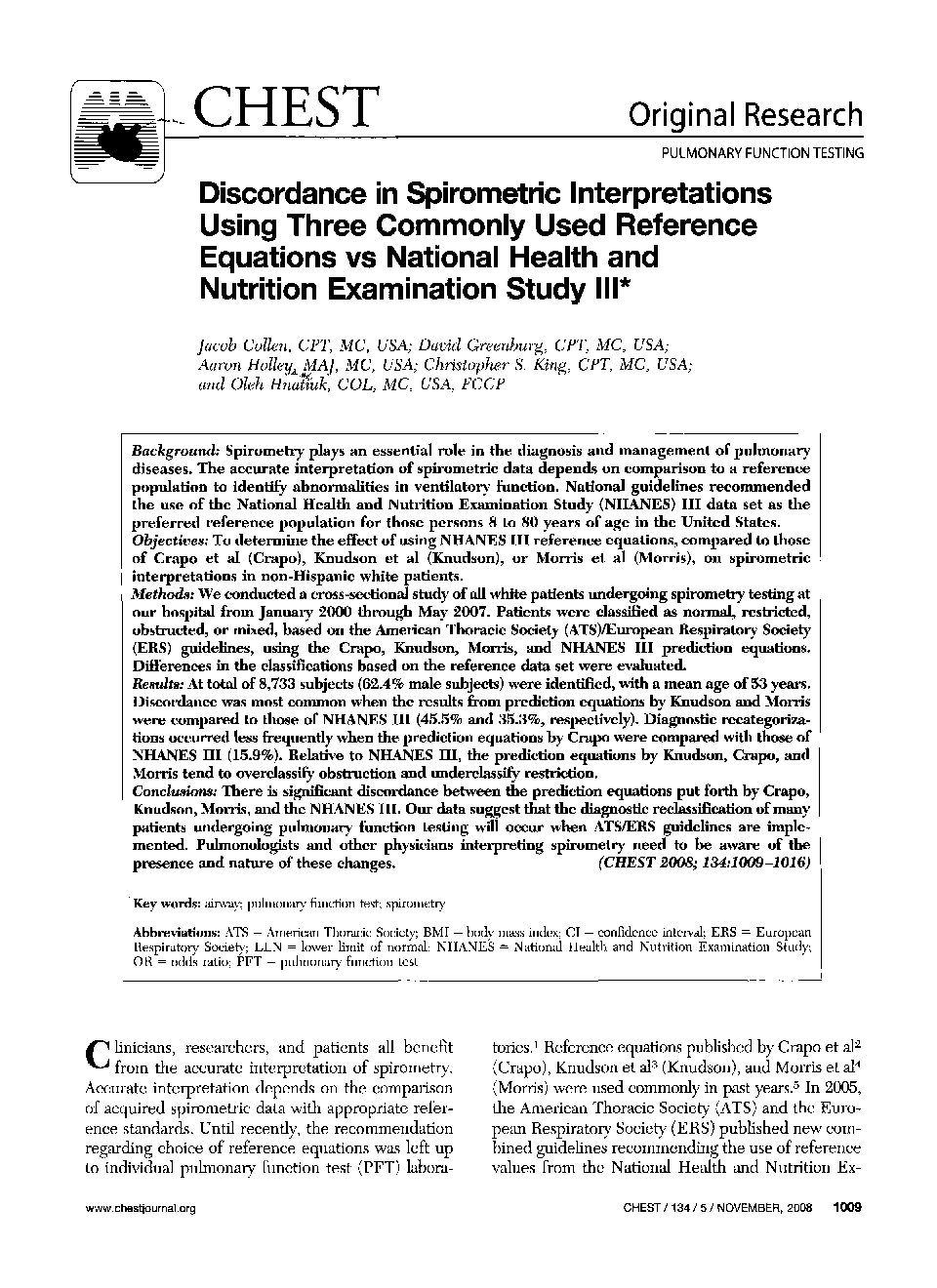| Article ID | Journal | Published Year | Pages | File Type |
|---|---|---|---|---|
| 2902807 | Chest | 2008 | 8 Pages |
BackgroundSpirometry plays an essential role in the diagnosis and management of pulmonary diseases. The accurate interpretation of spirometric data depends on comparison to a reference population to identify abnormalities in ventilatory function. National guidelines recommended the use of the National Health and Nutrition Examination Study (NHANES) III data set as the preferred reference population for those persons 8 to 80 years of age in the United States.ObjectivesTo determine the effect of using NHANES III reference equations, compared to those of Crapo et al (Crapo), Knudson et al (Knudson), or Morris et al (Morris), on spirometric interpretations in non-Hispanic white patients.MethodsWe conducted a cross-sectional study of all white patients undergoing spirometry testing at our hospital from January 2000 through May 2007. Patients were classified as normal, restricted, obstructed, or mixed, based on the American Thoracic Society (ATS)/European Respiratory Society (ERS) guidelines, using the Crapo, Knudson, Morris, and NHANES III prediction equations. Differences in the classifications based on the reference data set were evaluated.ResultsAt total of 8,733 subjects (62.4% male subjects) were identified, with a mean age of 53 years. Discordance was most common when the results from prediction equations by Knudson and Morris were compared to those of NHANES III (45.5% and 35.3%, respectively). Diagnostic recategorizations occurred less frequently when the prediction equations by Crapo were compared with those of NHANES III (15.9%). Relative to NHANES III, the prediction equations by Knudson, Crapo, and Morris tend to overclassify obstruction and underclassify restriction.ConclusionsThere is significant discordance between the prediction equations put forth by Crapo, Knudson, Morris, and the NHANES III. Our data suggest that the diagnostic reclassification of many patients undergoing pulmonary function testing will occur when ATS/ERS guidelines are implemented. Pulmonologists and other physicians interpreting spirometry need to be aware of the presence and nature of these changes.
